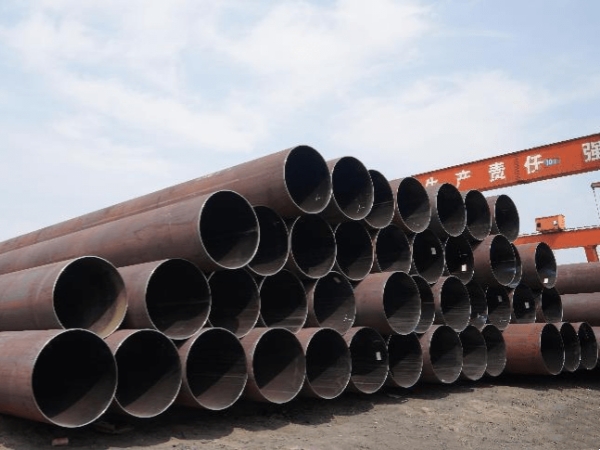Welding requirements for Longitudinal Submerged Arc Welded (LSAW) steel pipes are critical to ensure the integrity, strength, and reliability of the welded joints, which are essential for their use in various applications, including pipelines and structural components. Here are some key weld requirements for LSAW steel pipes.

Welding Procedure Specification (WPS):
A well-documented and approved Welding Procedure Specification (WPS) is essential. The WPS outlines the specific parameters and procedures for welding LSAW pipes, including details on the welding process, filler materials, preheat requirements, and post-weld heat treatment if applicable.
Qualified Welders:
Welders must be qualified and certified for LSAW pipe welding. They should have the necessary skills and certifications to perform the welding work in accordance with the specified WPS.
Material Compatibility:
Ensure that the base materials (the steel plates or coils used for the pipes) and the welding consumables (electrodes, wires, or flux) are compatible in terms of chemical composition and mechanical properties. This compatibility is crucial for achieving strong and durable welds.
Pre-Weld Preparation:
The steel plates should be properly cleaned and prepared before welding to remove any contaminants, rust, or surface imperfections that could affect the quality of the weld.
Weld Joint Preparation:
The edges of the steel plates should be prepared for welding, which may include beveling, chamfering, or other joint configurations, depending on the specifications. Proper joint preparation is essential to ensure full penetration and a strong weld.
Welding Process:
LSAW pipes are typically welded using a submerged arc welding (SAW) process. This process involves the use of a continuous, controlled electric arc and a granular flux, which melts and fuses the edges of the steel plates together. The welding parameters, such as voltage, amperage, and travel speed, should be set according to the WPS.
Inspection and Quality Control:
Non-destructive testing methods, such as ultrasonic testing and radiographic inspection, should be employed to inspect the quality of the welds. The inspection process ensures that there are no defects, cracks, or inclusions within the welds.
Post-Weld Heat Treatment (PWHT):
Depending on the material specifications and the requirements of the project, post-weld heat treatment may be necessary. PWHT helps relieve residual stresses and improves the mechanical properties of the weld.
Welding Defects Repair:
If any defects are detected during inspection, they should be repaired by qualified welders. The repair process should follow the established welding procedures and quality standards.
Surface Finish and Coating:
After welding, the exterior and interior surfaces of the LSAW pipes may be cleaned and coated to protect against corrosion and improve the pipe's appearance.
Documentation and Traceability:
Proper documentation of the welding processes, inspections, and materials used is essential for quality control and traceability. This information helps in tracking the history of the pipes and ensuring compliance with project requirements and industry standards.
It's important to follow industry standards and project-specific requirements when establishing weld requirements for LSAW steel pipes. These requirements may vary depending on the application and the intended use of the pipes, so consulting with experts and adhering to relevant codes and standards is crucial to ensure the safety and reliability of the welded joints.